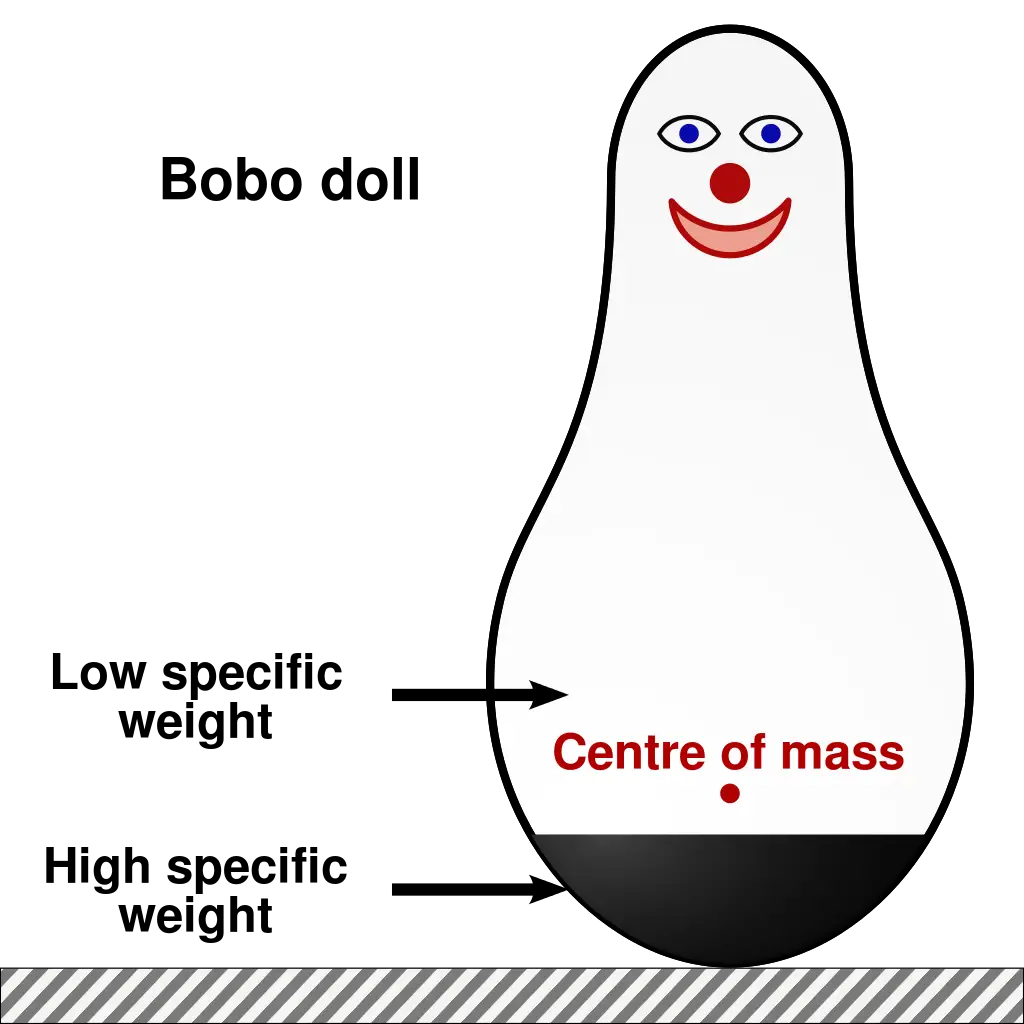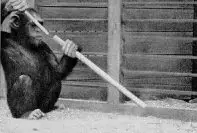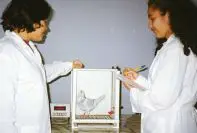Albert Bandura is known for his theory of Observational Learning. As a part of his theory, Bandura conducted an experiment in 1961 in order to observe if social behaviors can be acquired through the process of imitation and observation. The behavior in question was aggression. Bobo doll experiment can also be considered as one of the many observational learning examples.
Theory
The study conducted by Bandura and his colleagues involved 72 children aged between 3 to 6 years old. Among them, 36 of them were boys and other 36 were girls. All the children who were involved in the experiment were separately tested before hand in order to check how aggressive they were, and they were rated on four 5-point rating scales. Since all children were taken from Stanford University Nursery School, it was easier for Bandura and others to observe the children in the nursery. After carefully observing the daily behavior of the children in terms of levels of aggression, children were matched in groups. This is an example of matched pairs design.
In order to assess the inter-reliability of the observers, two observers were made to independently assess 51 kids and their ratings were compared. Ratings showed the high reliability correlation (r = 0.89). This meant that observers were in good agreement regarding the behavior of the children.

Methods
A lab experiment was conducted as a first method of the experiment. The children were divided into three different groups of 24 children each.
- Aggressive model shown to 24 children
- Non-aggressive model shown to 24 children
- No model shown (control condition) – 24 children
Step 1: Modeling
Each of the children were individually taken into a room and left to play with different toys and pictures while
- 24 children (the first group of 12 boys and 12 girls) watched either a male or a female model displaying aggressive towards the bobo doll (a form of a toy). The adults (models) abused the bobo doll both verbally and physically, hitting with hammer and shouting “pow, boom, hit him, etc”.
- The next group of 24 children (the second group of 12 boys and 12 girls) are also taken in the room full of toys, where they are exposed to a model playing quietly in non-aggressive manner, ignoring the bobo-doll.
- The last group of remaining 24 children was control group, who were not exposed to any models.
Step 2: Aggression Arousal
In the second stage, the experimenter used the aggression arousal technique for all 72 children. Each of the children was taken to the room full of attractive toys individually. And, as soon as the child started to play with the toys, the experimenter told the kids that those particular toys were off limits. This was repeated to each of the 72 children.
Step 3: Delayed Imitation Test
The children were then taken to the next room individually where they had access to different kinds of aggressive and non-aggressive toys. Non-aggressive toys like tea set, bears, plastic animals, crayons and aggressive toys like peg board, dart guns, and a bobo doll were in the room.
Each child was left in the room for 20 minutes and their behaviors were observed at 5-second intervals. Observations were made through a one-way mirror.
Children were also found to display independent behaviors that weren’t displayed by the model. One of which included punching the 3 feet bobo doll on the nose.
Results
- The group that was exposed to the aggressive model imitated aggressive responses in comparison to the other groups.
- Children who were exposed to aggressive model were also seen to show non-imitative and partial aggression.
- Girls in the aggressive model group showed physical expression if the model was male and verbal aggression if the model was female.
- Girls weren’t very keen in imitating the same-sex models (female models), while boys on the other hand were more likely to imitate same-sex models.
- Physically aggressive responses were imitated by boys more than the girls. In the case of verbally aggressive responses, there was virtually no difference between boys and girls.
Conclusion
Albert Bandura succeeded in what he set out to prove. As per the bobo doll experiment, children were likely to learn social behavior such as aggression through observational learning.
In the later years, the experiment has been a base for those who argue that media violence has serious effects on shaping up the behaviors of the children.
Critical Evaluation
There are various benefits to the experimental method conducted by the experimenter. Since the experiment was established with cause and effect relationship in a controlled environment, it was clearly absorbed regarding what caused the child to act in the particular manner.
Variables like model’s gender, the room, toys, time interval for child to observe the model, were all controlled. Also, the experiment used precise procedures and instructions. This means that the experiment can be easily replicated using the same variables and procedures as the original experiment. There have been different studies replicating the original bobo doll experiment with slight changes, such as using video (Bandura, 1963). The results found were quite similar.
The experiment, however, isn’t without limitations. Here are some of the limitations as pointed out by expert psychologists.
- Ecological validity of this lab experiment has been questioned by many. It’s not always likely that the model will be an adult for the child, also the experiment shows strangers, which of course isn’t normal since children are more likely to observe models within the family. The lack of interaction between the observer and the model is another limitation.
- In 1990, Cumberbatch discovered that children who had previously played with Bobo Doll before the experiment were more likely to imitate the aggressive response in compared to the children who were only playing with the bobo doll for the first time.
- The whole experiment was measured immediately based on the immediate demonstrations of the actions of the observer. Long-term effects were not taken into account.
- There have also been arguments that the experiment was unethical. For instance, there is always a chance that the children involved in the experiment might have suffered long-term consequences as a result of the study.
Bobo Doll Study with Vicarious Reinforcement
In 1965, Bandura replicated the experiment in order to measure vicarious reinforcement.
Reinforcement obtained by observing another person is referred to as vicarious reinforcement. In simple terms, we not only watch what other people do, but we also evaluate what happens (consequences) of the actions other people perform. An observer is more likely to imitate rewarded behavior and refrain from punished behavior.
In the similar experimental setup, the first group saw the model’s aggression being rewarded with sweets and drink. The second group observed the model being scolded for the aggressive actions. The third group, in a controlled condition, did not see any consequences.
The children in the group where the model was punished had clearly observed the behavior but did not imitate it because of the expected negative consequences. On the other hand, the group who saw the model being rewarded for his violent actions responded with aggressive actions too when presented with a similar situation.




